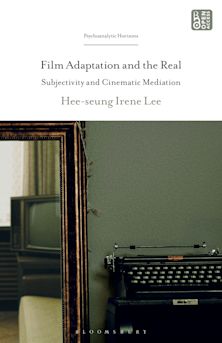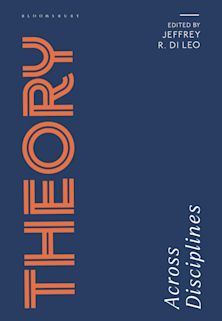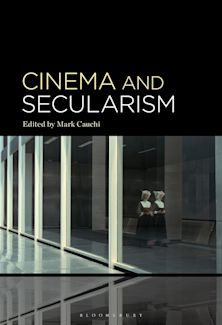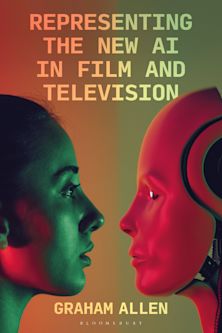- Home
- ACADEMIC
- Film & Media
- Film Theory
- A Grammar of Cinepoiesis
You must sign in to add this item to your wishlist. Please sign in or create an account
Description
Cinepoiesis, or cinema of poetry, strikes us as a strange combination, a phrase we initially read as an oxymoron. Poetry is often associated with the abstract and the evocative, while cinema suggests the concrete and the visible. Yet, various visual media use strong and often contradictory images, whose symbolic force and visual impact stimulate the public’s attention. Abstract and emblematic images surround us, and the poetic nature of these images lies in the way they speak beyond their apparent limits and stimulate connections on a subjective level. A prosaic world like the contemporary one, though, no longer seems to hold a place for poetry. We are inundated by the need to tell and to be told, the need to build our lives through narratives. But it is precisely here, in this contemporary landscape, that the cinema of poetry attempts to establish a space for itself, exchanging the productive and industrial apparatus for the poetic stimulus of a sensory experience. A Grammar of Cinepoiesis is a theoretical and practical guide to the cinema of poetry, to its tools and forms. It examines how the language of a “cinema of poetry” works both in its theoretical foundations and in its modes of representation, and how it takes shape in the exemplary practice of Italian authors such as Pier Paolo Pasolini, Michelangelo Antonioni, Federico Fellini, and the more recent Franco Piavoli and Matteo Garrone.
Table of Contents
della luna
Chapter II: “Im-Signs” and Free Indirect Subjective
Pier Paolo Pasolini’s Cinema of Poetry: Accattone and Mamma Roma
Chapter III: Color and Focus: Michelangelo Antonioni’s Il Deserto Rosso and Blow Up
Chapter IV: Sound and Silence: Franco Piavoli’s Il pianeta azzurro and Nostos
Chapter V: Movement and Form: Matteo Garrone’s Primo amore and Gomorra
Epilogue: The Visual Power of Images
Appendix I: An Interview with Franco Piavoli
Appendix II: An Interview with Matteo Garrone
Product details
| Published | Sep 17 2015 |
|---|---|
| Format | Ebook (PDF) |
| Edition | 1st |
| Extent | 222 |
| ISBN | 9798216329299 |
| Imprint | Lexington Books |
| Series | Cine-Aesthetics: New Directions in Film and Philosophy |
| Publisher | Bloomsbury Publishing |
About the contributors
Reviews
-
In this accomplished and altogether brilliant study, Carlorosi offers persuasive and detailed readings of a group of key films from Italian cinema history—Federico Fellini’s La voce della luna, Pier Paolo Pasolini’s Accatone and Mamma Roma, Michelangelo Antonioni’s Red Desert and Blow-Up, and more recently Franco Piavoli’s Il pianeta azzurro and Nostos, and Matteo Garrone’s Primo amore and Gomorra. The author explores the philosophy of each of these gifted filmmakers as revealed in their films, and she does so in a manner that elides traditional taxonomic theory and pursues a much more humanist and aesthetic path. Carlorosi’s passionate and erudite analysis of these films and their creators opens up a new path for film interpretation, which is in keeping with one of the aims of the series in which the book appears, 'Cineesthetics: New Directions in Film and Philosophy.' With these generous, perceptive, and deeply informed readings, Carlorosi makes the films come alive for a new generation of viewers. The book closes with illuminating interviews with directors Piavoli and Garrone. This is an original and vibrant book. Summing Up: Highly recommended. Upper-division undergraduates through faculty and professionals.
Choice Reviews
-
Leopardi's “Silvia” leads us to find poetry in life and life in poetry. Silvia Carlorosi, adapting Leopardi's poetics, leads us to look for poetry in cinema and to engage in the process of poiesis or creation that poetic cinema requires of the viewer, not only to understand the reality represented on the screen, but to appreciate and enrich our own lives as well.
Sante Matteo, Miami University
-
Presented in a clear and engaging style and supported by detailed analysis of selected films by both canonical auteurs and newer filmmakers, Carlorosi’s book offers important and original insights for the understanding of the ‘cinema of poetry.’ The meanings of a ‘poetic camera’ will be less obscure after reading this study.
Roberta Tabanelli, University of Missouri-Columbia
-
In this rigorous and impassioned study, Silvia Carlorosi develops a critical methodology based on Pier Paolo Pasolini’s seminal “Cinema of Poetry” essay, amplified by extensive research in the field of image theory. The result is a series of case studies which investigate the irrational, disruptive, and multidimensional workings of the image in examples from the filmographies of Pasolini, Fellini, Antonioni, Garrone, and Piavoli. This is a powerful new tool for the analysis of films which defy the codified norms of cinematic convention and instead propose a liberated, open-ended, and visionary approach to the world of lived experience.
Millicent Marcus, Yale


































